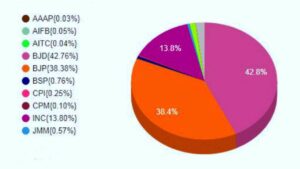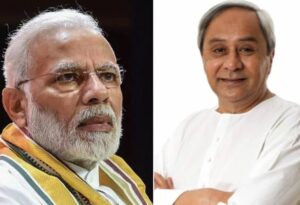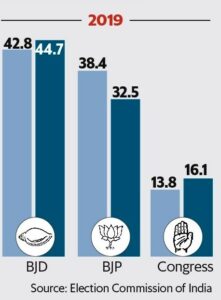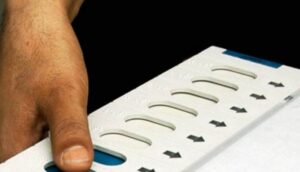OdishaPlus Bureau

The Bharatiya Janata Party winning eight Lok Sabha seats in the 2019 general elections has baffled many political analysts and has left the ruling Biju Janta Dal a lot worried. For the BJP, it was a satisfying moment although the Amit Shah-led party would have liked to win a few more seats.
The BJP’s upward journey in Odisha actually began with the 2017 three-tier panchayat elections. The party won a substantial number of Zilla Parishad seats.It was at this point that the party had set its goal to trounce the ruling party in Odisha. Accordingly, the saffron party devised its ‘Look East’ Policy and Odisha along with West Bengal came under its scanner.

Fear Factor
In the by-election to the Bijepur assembly seat which was held just a few days after the rural polls, the BJD surely won the seat. But the fear of losing in 2019 was looming large at the Naveen-led party.
With the BJP shifting focus to Odisha and West Bengal in the run-up to the Lok Sabha elections 2019 – to compensate for any possible seat loss elsewhere in the country -, the BJD was undoubtedly nervous. It prepared for a tougher battle, especially in western Odisha.
As the actual results have shown,the BJP swept all six parliamentary seats in the western region which has been its stronghold, besides winning the Bhubaneswar and Balasore parliamentary constituencies in coastal Odisha.

Modi-Naveen
So, how did the BJP win eight seats against the lone seat it had won in 2014? Split Voting is the answer.’Modi at Center, Naveen in State’ seems to have occupied the minds of the voters.
The division in voting for the assembly and general elections in Odisha may have surprised political observers,but that was going to happen given BJP’s rigorous electioneering. While there was little difference in assembly and parliamentary polls in Andhra Pradesh which went to polls along with Odisha , the divergence is clear in Odisha.

Vote Share
In actual fact, the distinct pattern of voting in Odisha’s assembly and parliamentary elections was visible across the state. Take for example, the BJP could not win a single assembly seat in the Bhubaneswar parliamentary constituency, yet ex-bureaucrat Aparajita Sarangi went on to win the Lok Sabha polls, with an over 2 percentage point lead in vote share over his BJD rival.
While the BJP improved its vote share in the parliamentary elections from 22% in 2014 to 38.4% in 2019, BJD’s vote share dipped marginally from 44.8% to 42.8%. It appears the BJP ate into the Congress votes in the parliamentary election if we take into account Congress’ vote share almost halved – from 26.4% in 2014 to 13.8% in 2019.
However, the BJP also gained significantly in the assembly elections with a 14.3 percentage point increase in its vote share from 18.2% in 2014 to 32.5% in 2019.Number–wise the increase is by 13 seats.
Despite the fact that the BJP could not convert the rise in vote share in the assembly election to seats, it made a good deal of progress in Odisha, a key state for its Look East policy.

Split Voting
The results ,however, have shown that the split voting was limited to a few pockets of tribal dominated western Odisha, where the BJP candidates performed better than BJD in the Lok Sabha seats.
Those from BJP who won the Lok Sabha seats in Odisha are : Aparajita Sarangi (Bhubaneswar), Pratap Chandra Sarangi(Balasore), Bisweswar Tudu (Mayurbhanj), Suresh Pujari(Bargarh), Nitish Gangdev(Sambalpur), Juel Oram (Sundergarh), Sangeeta Singhdeo(Bolangir) and Basant Kumar Panda (Kalahandi).





























